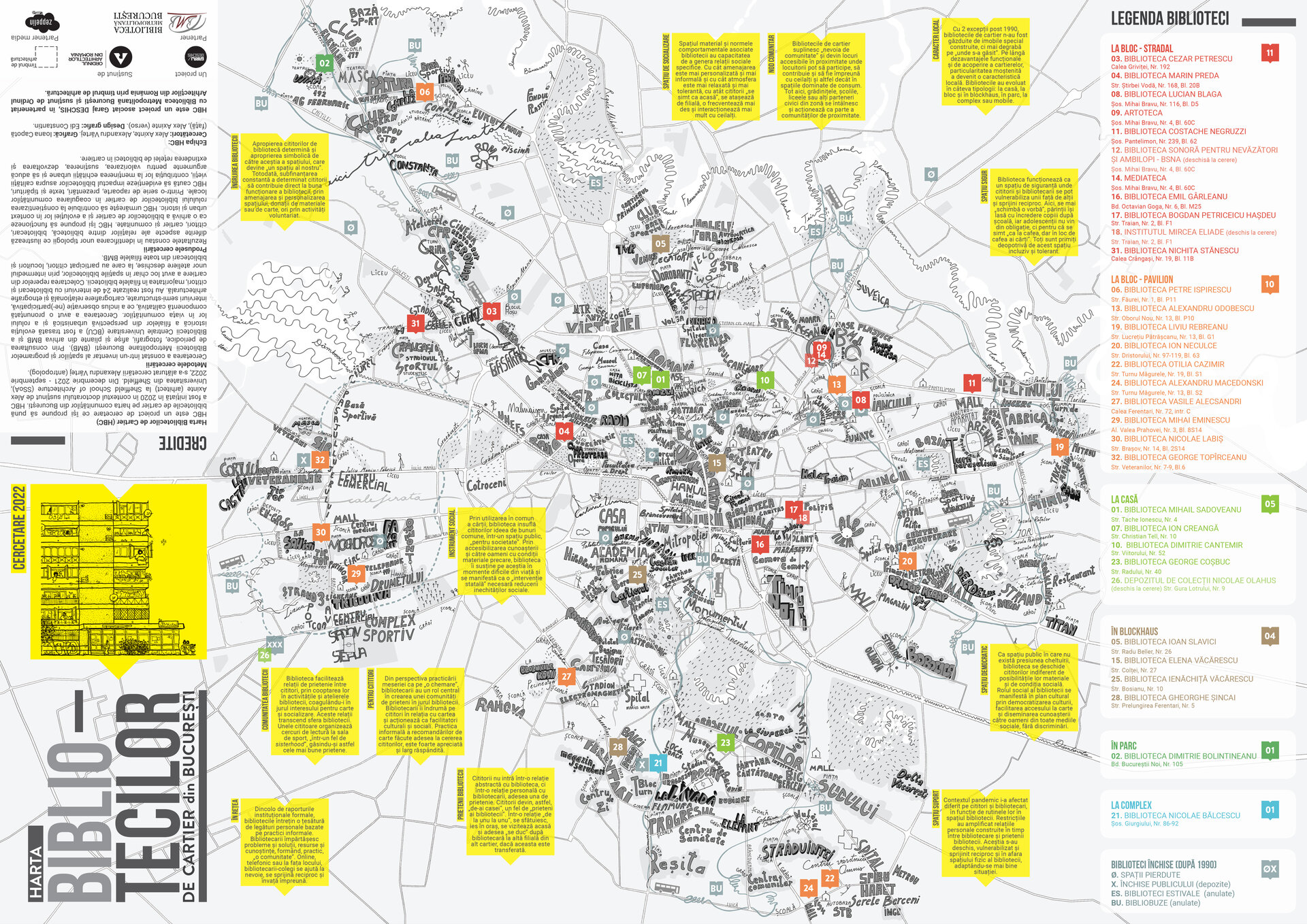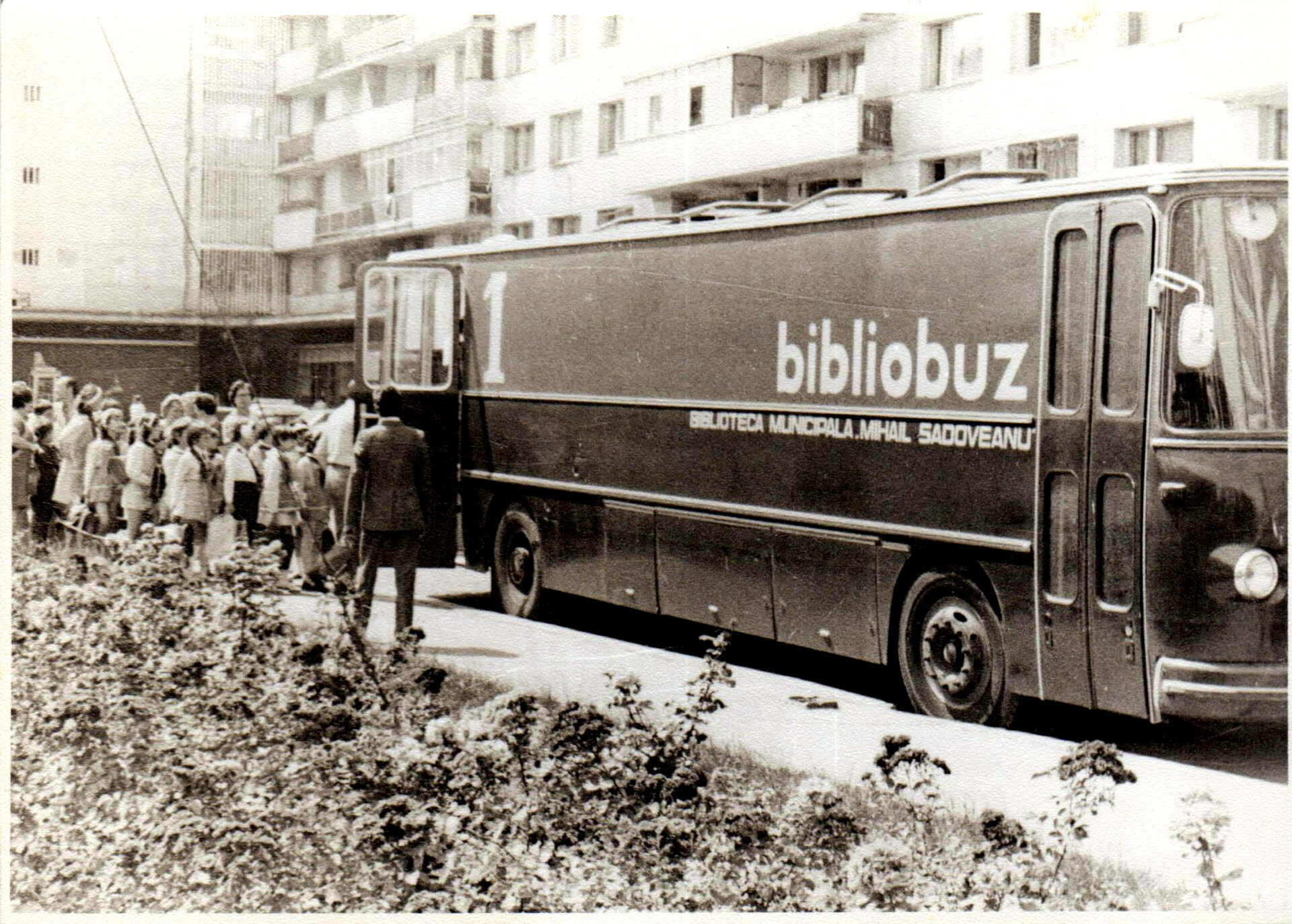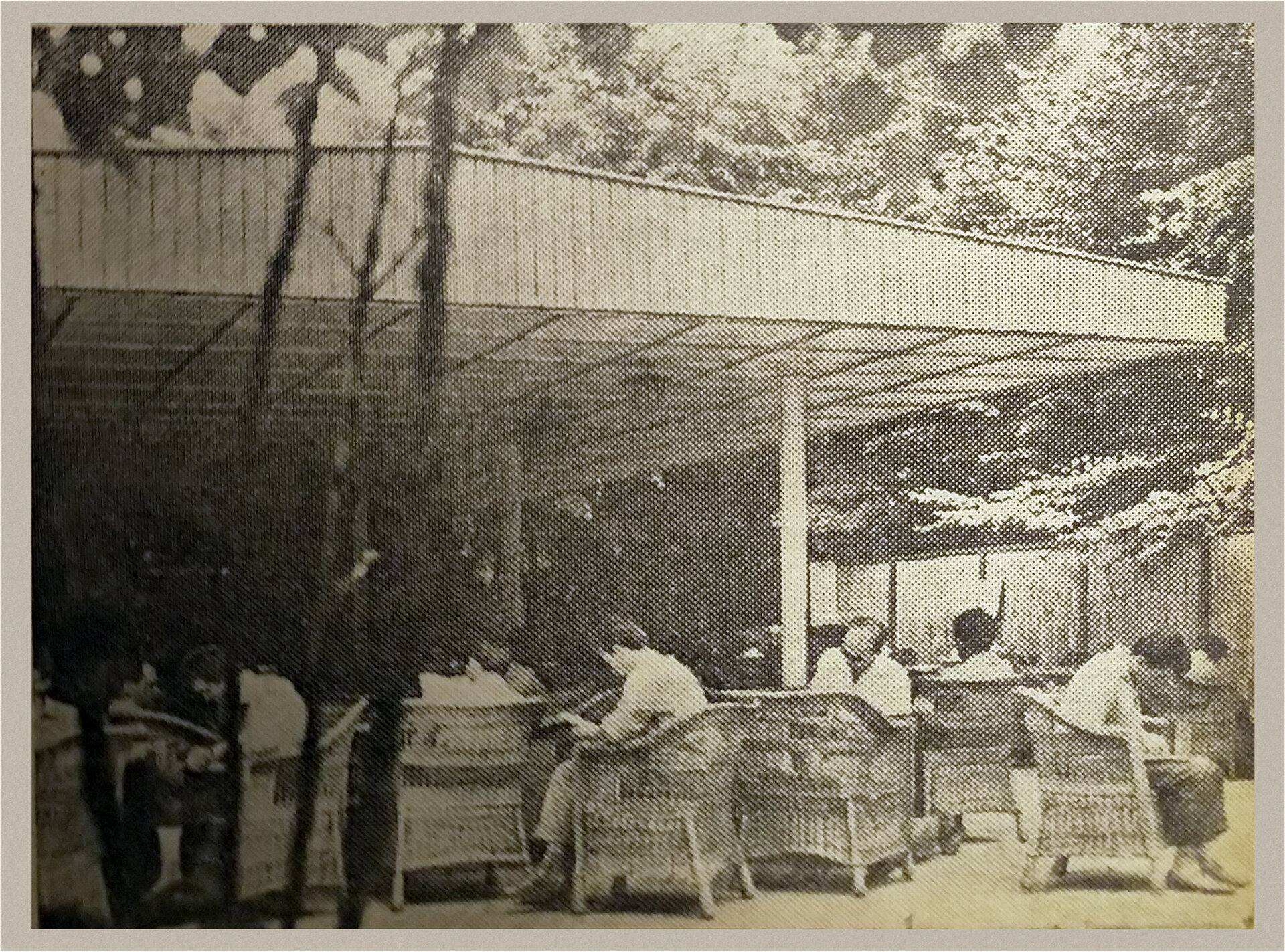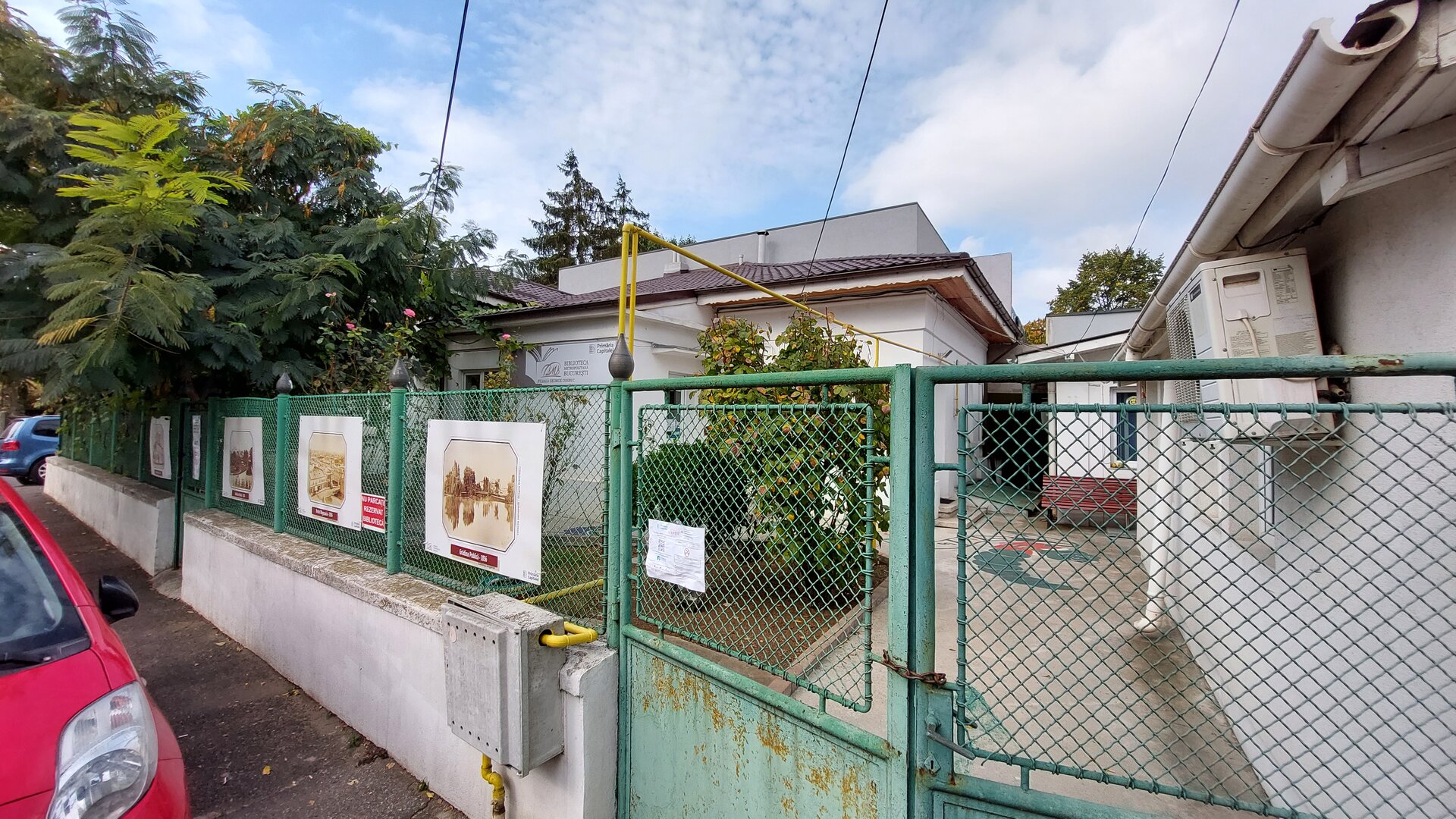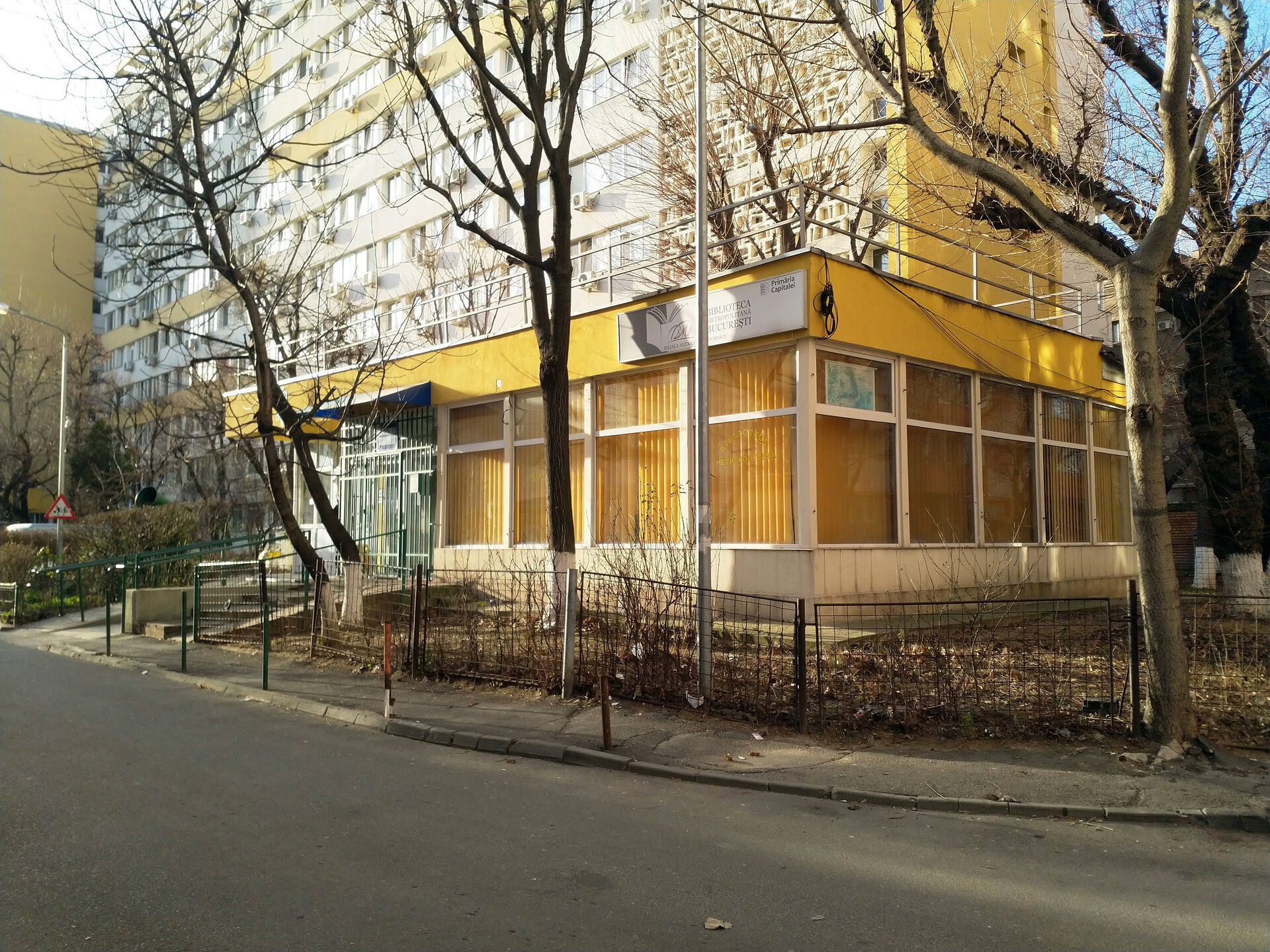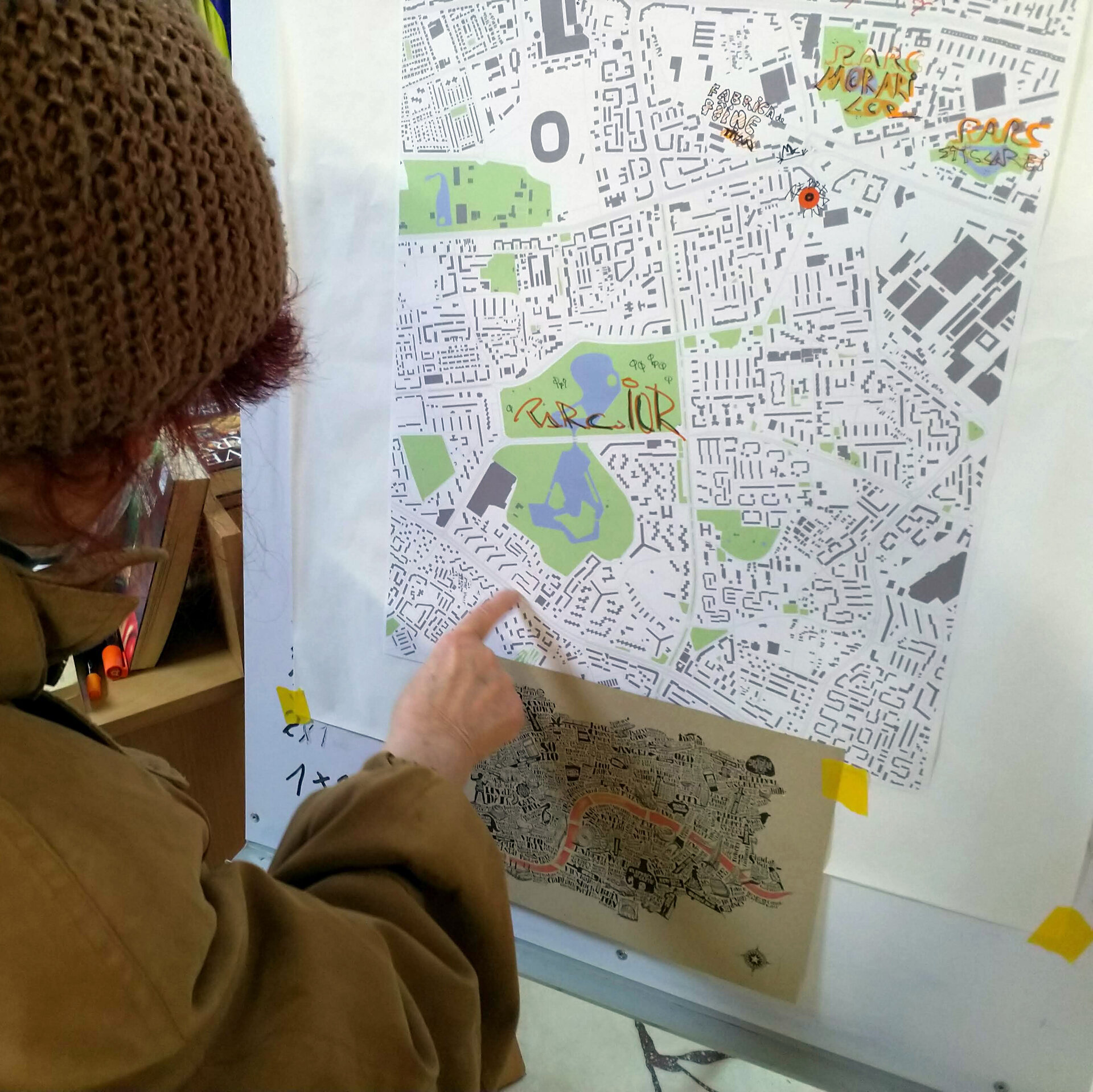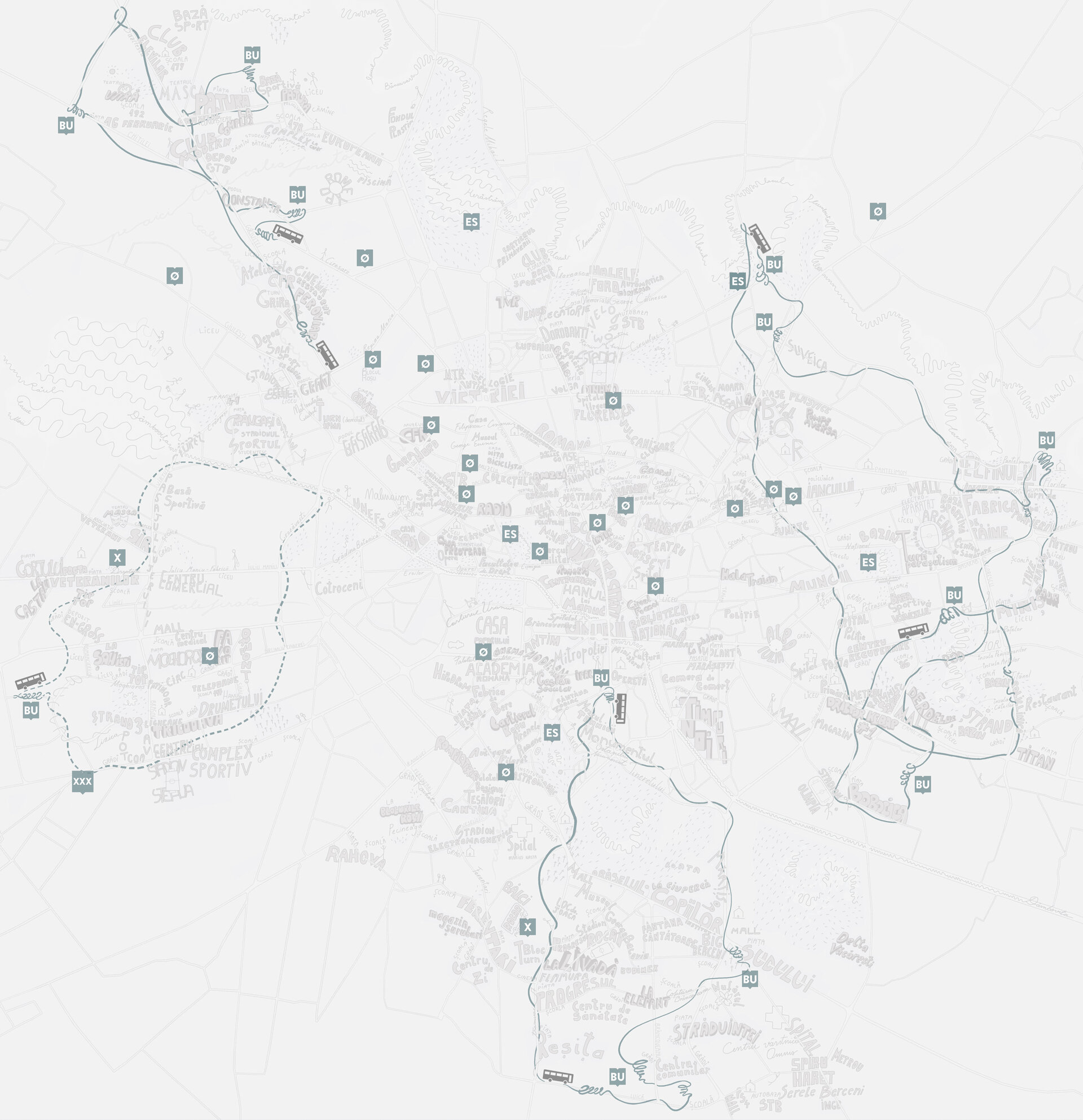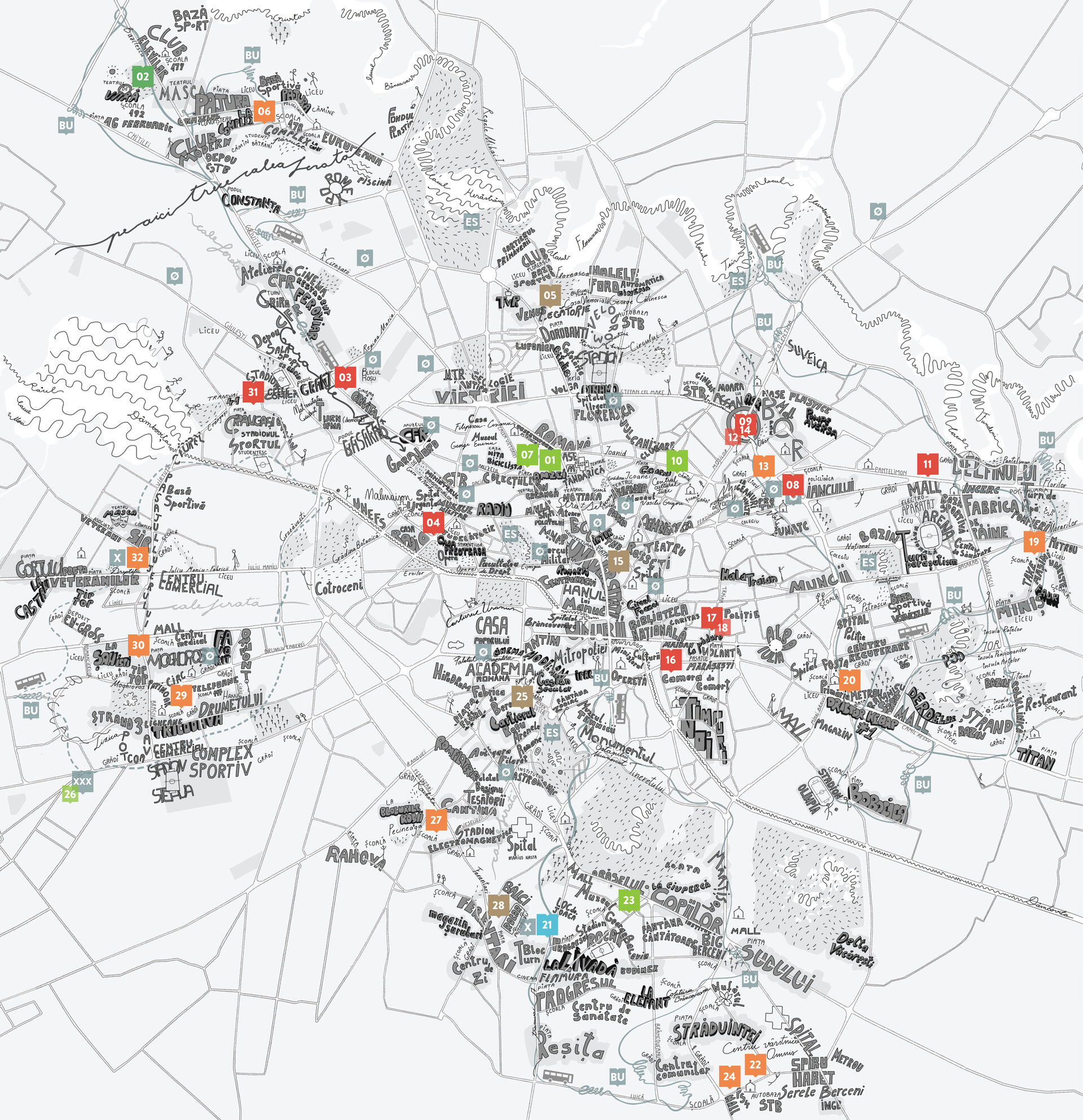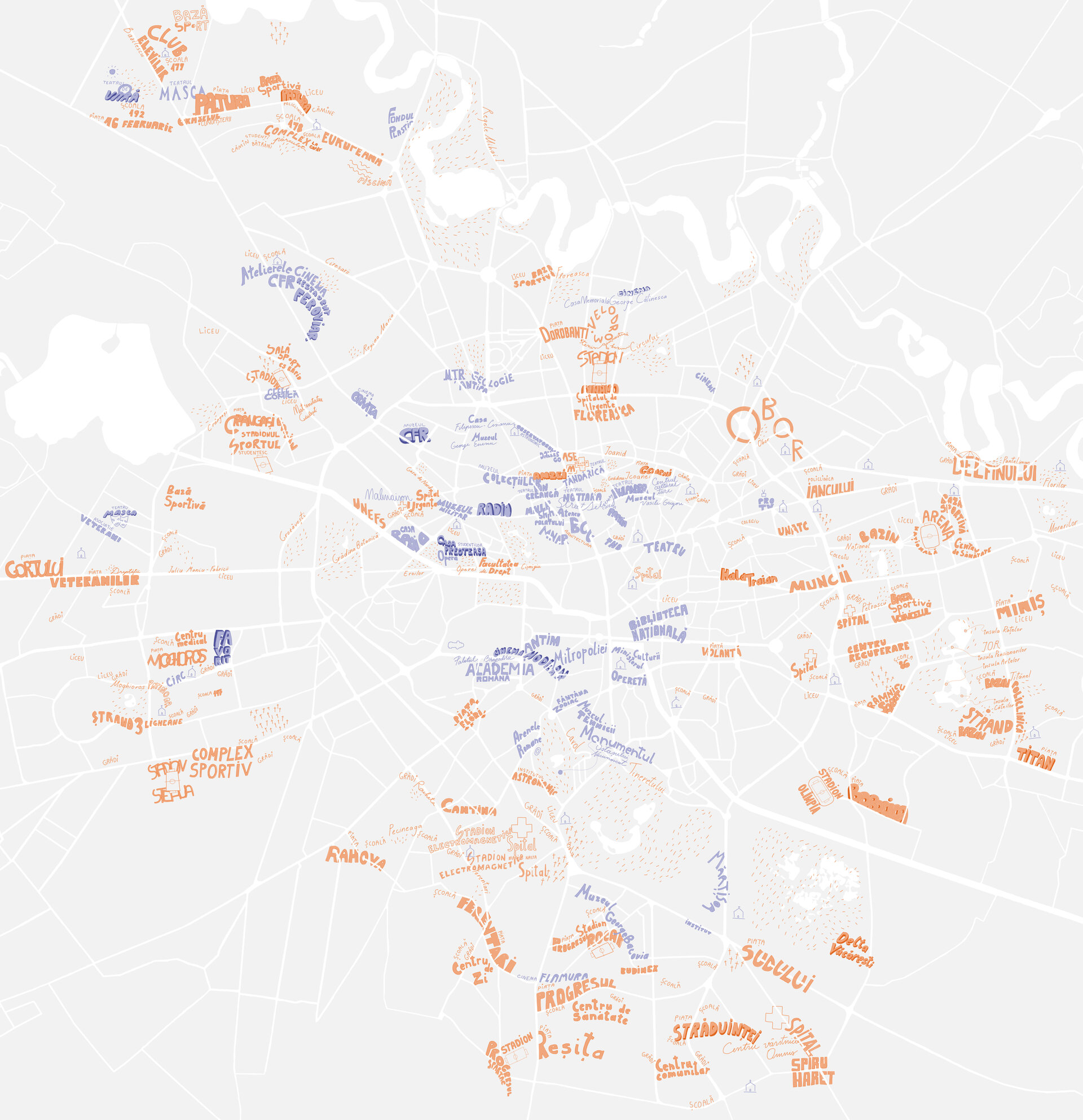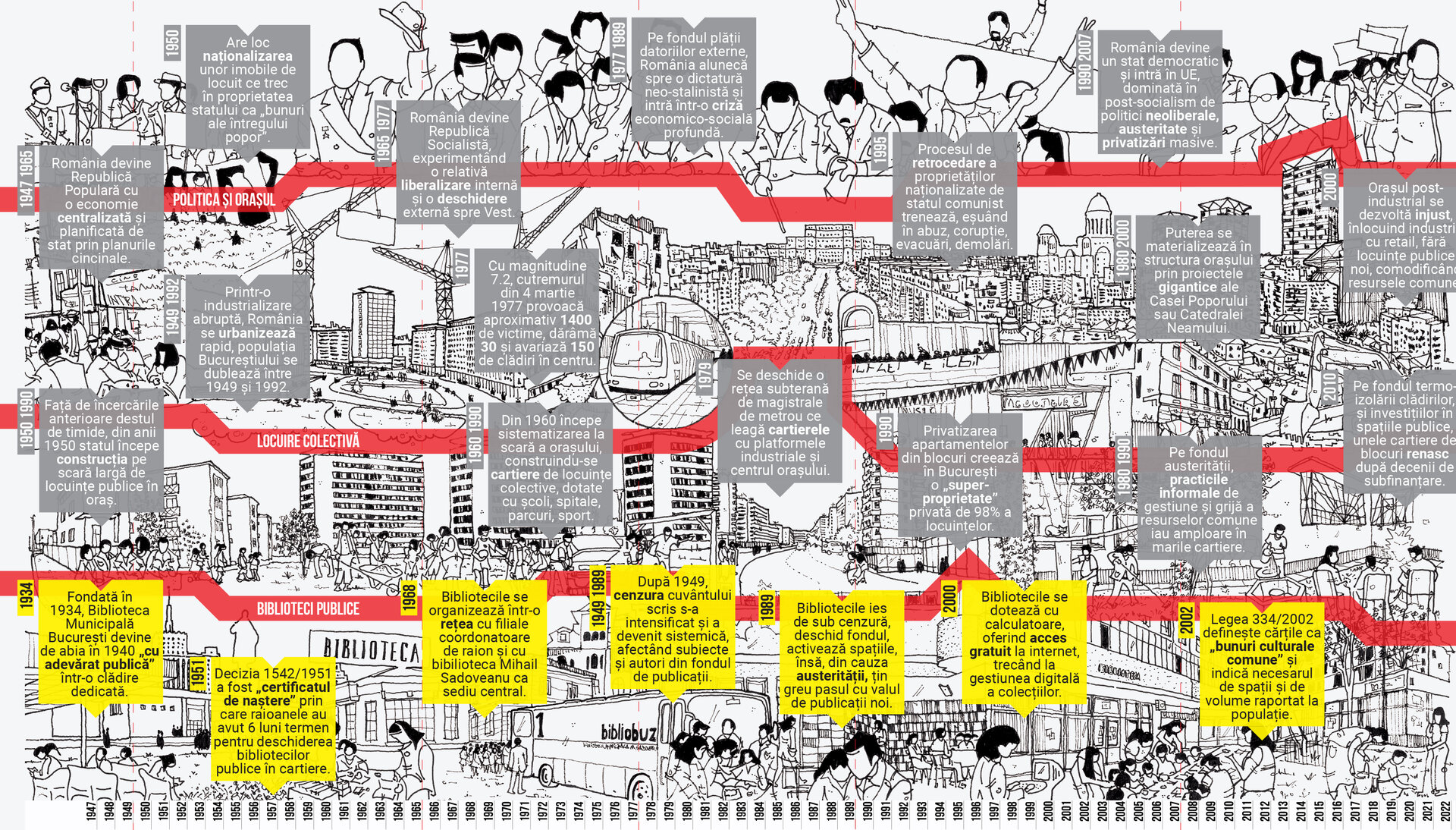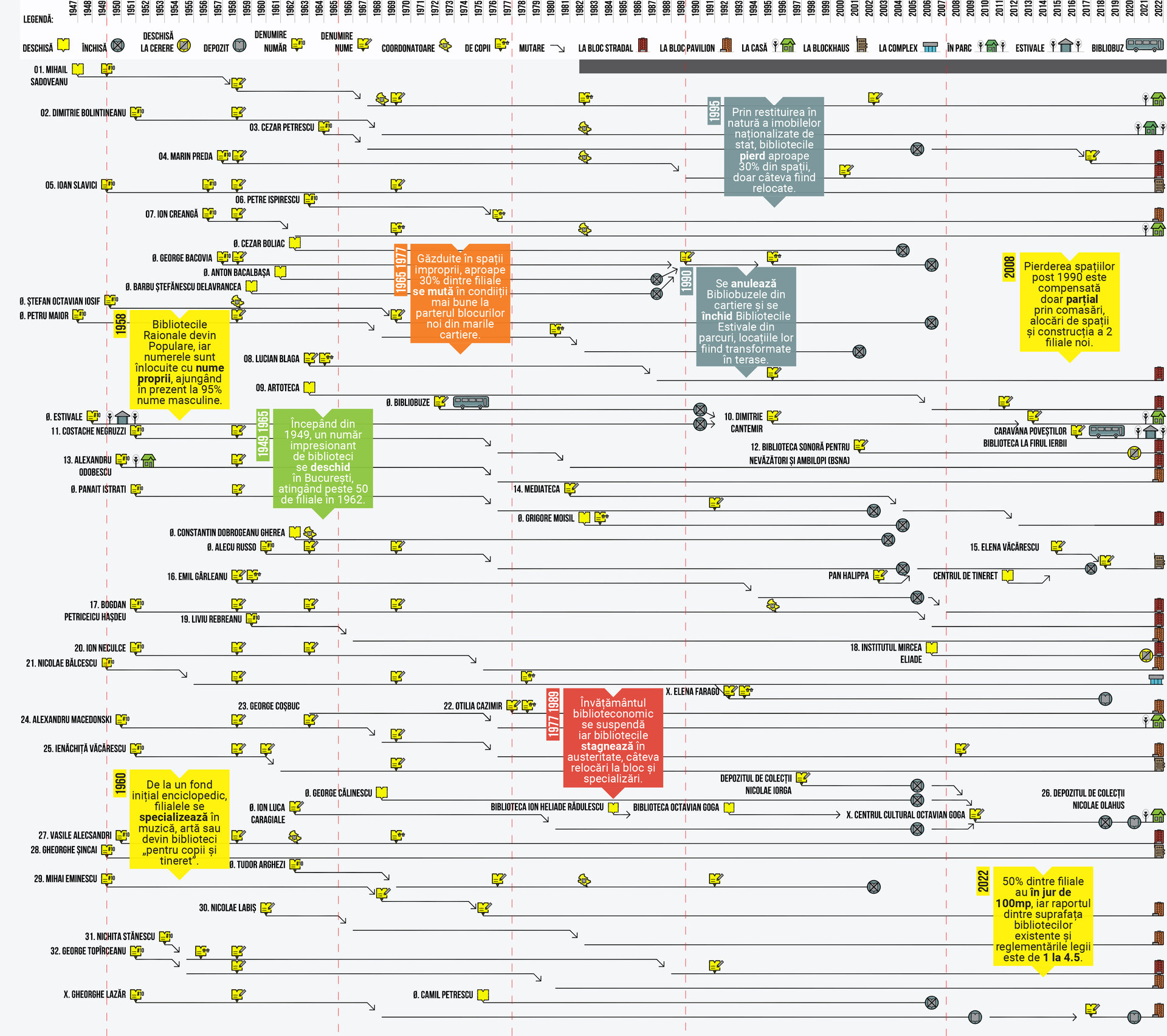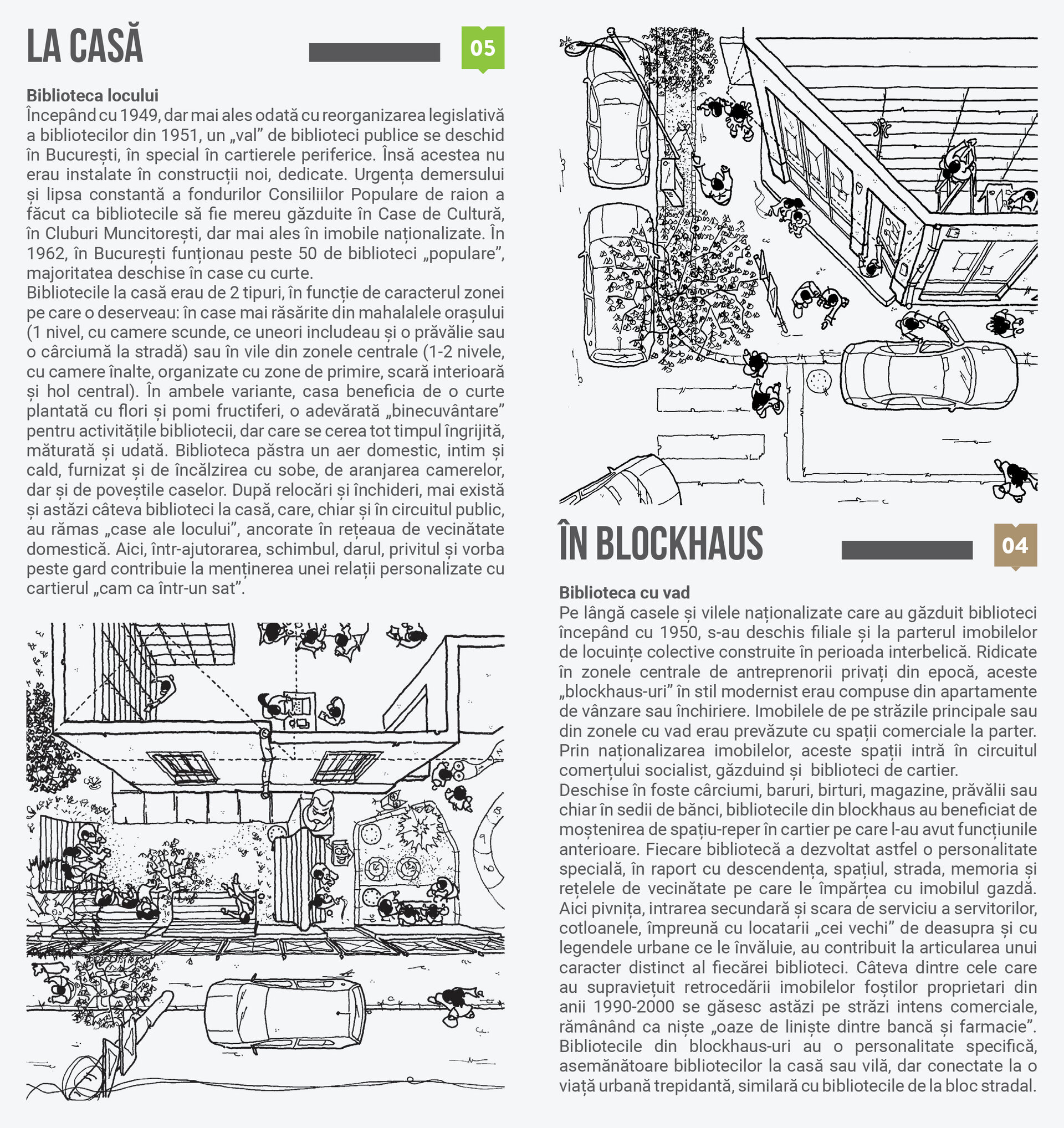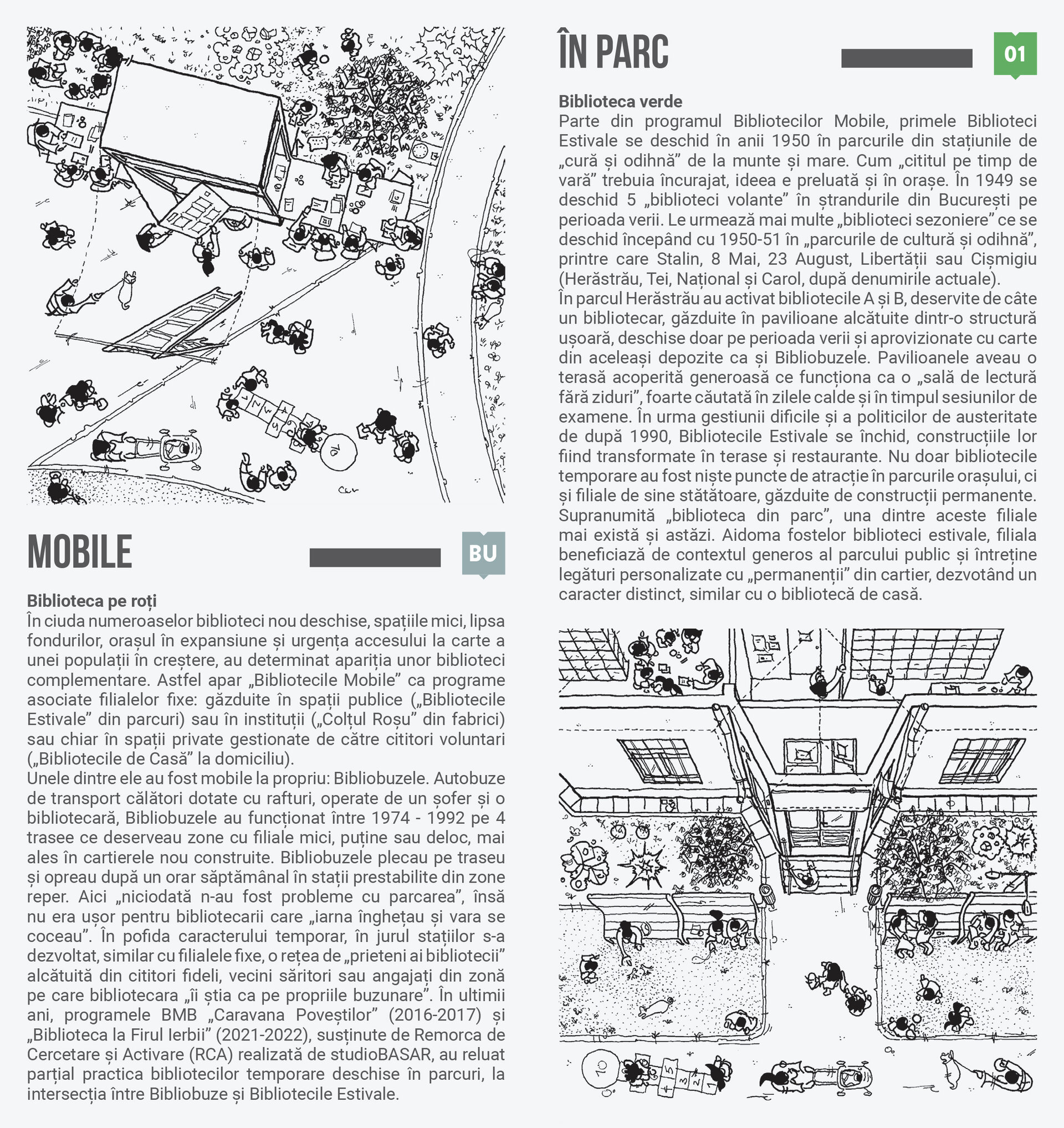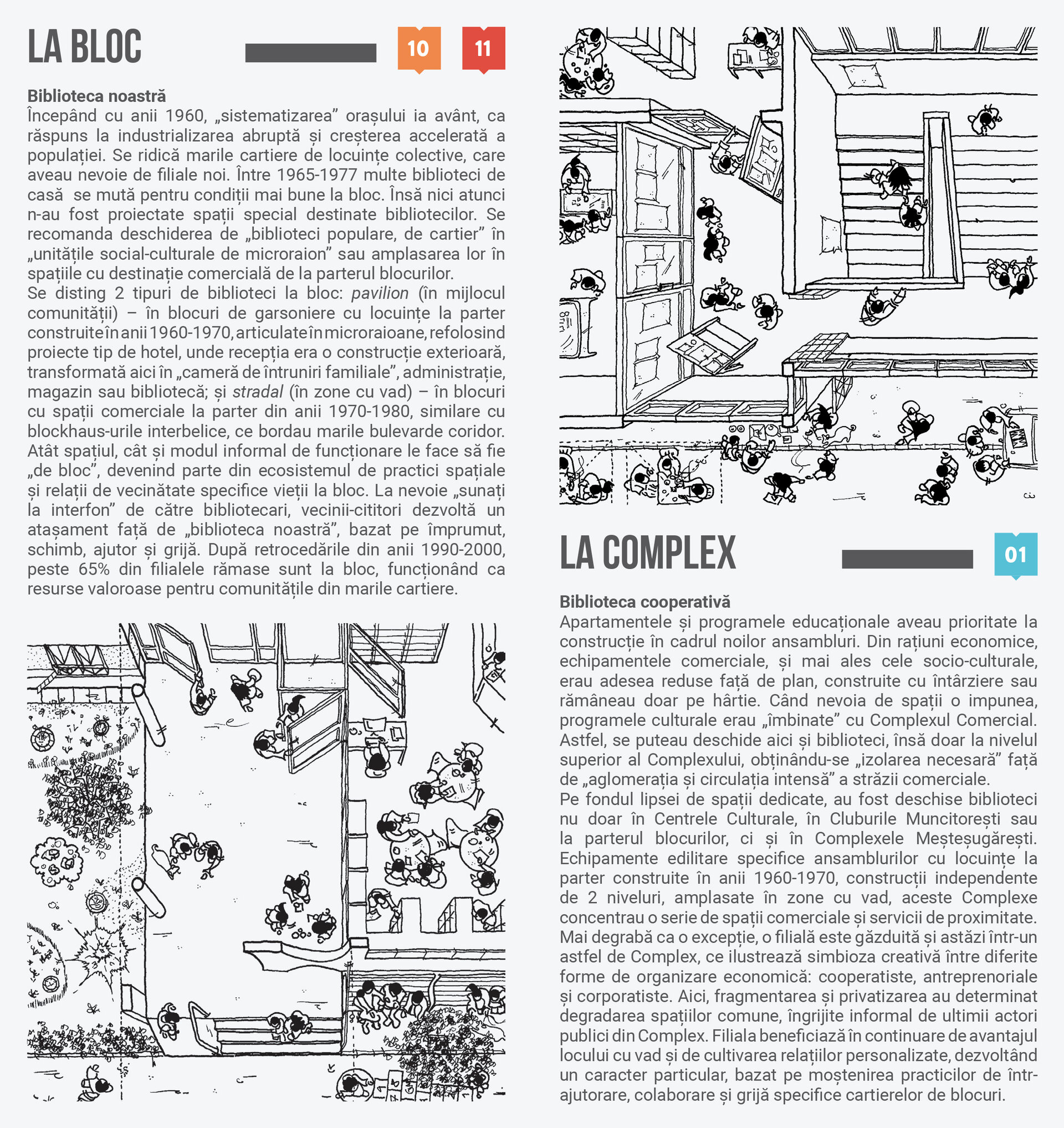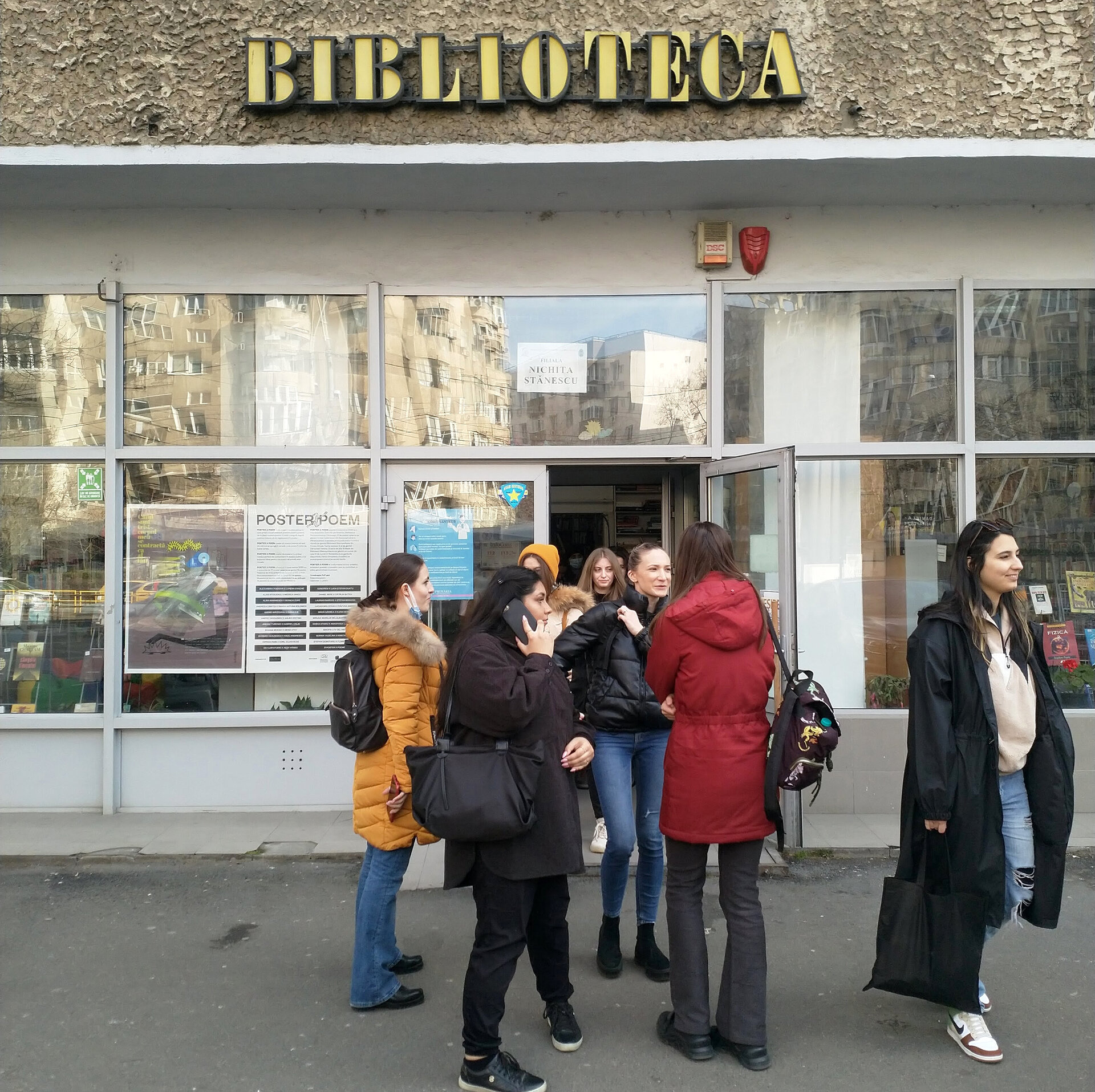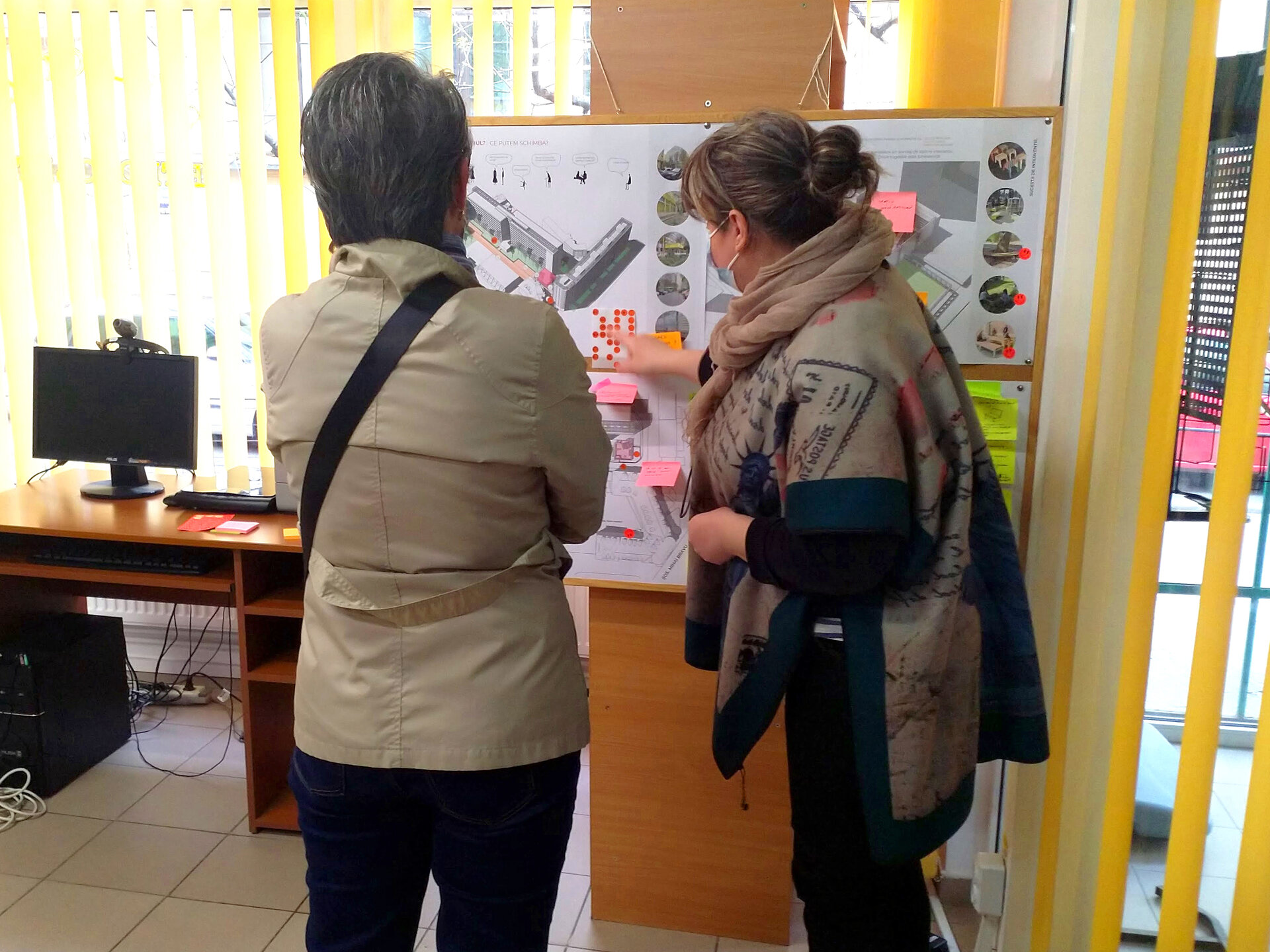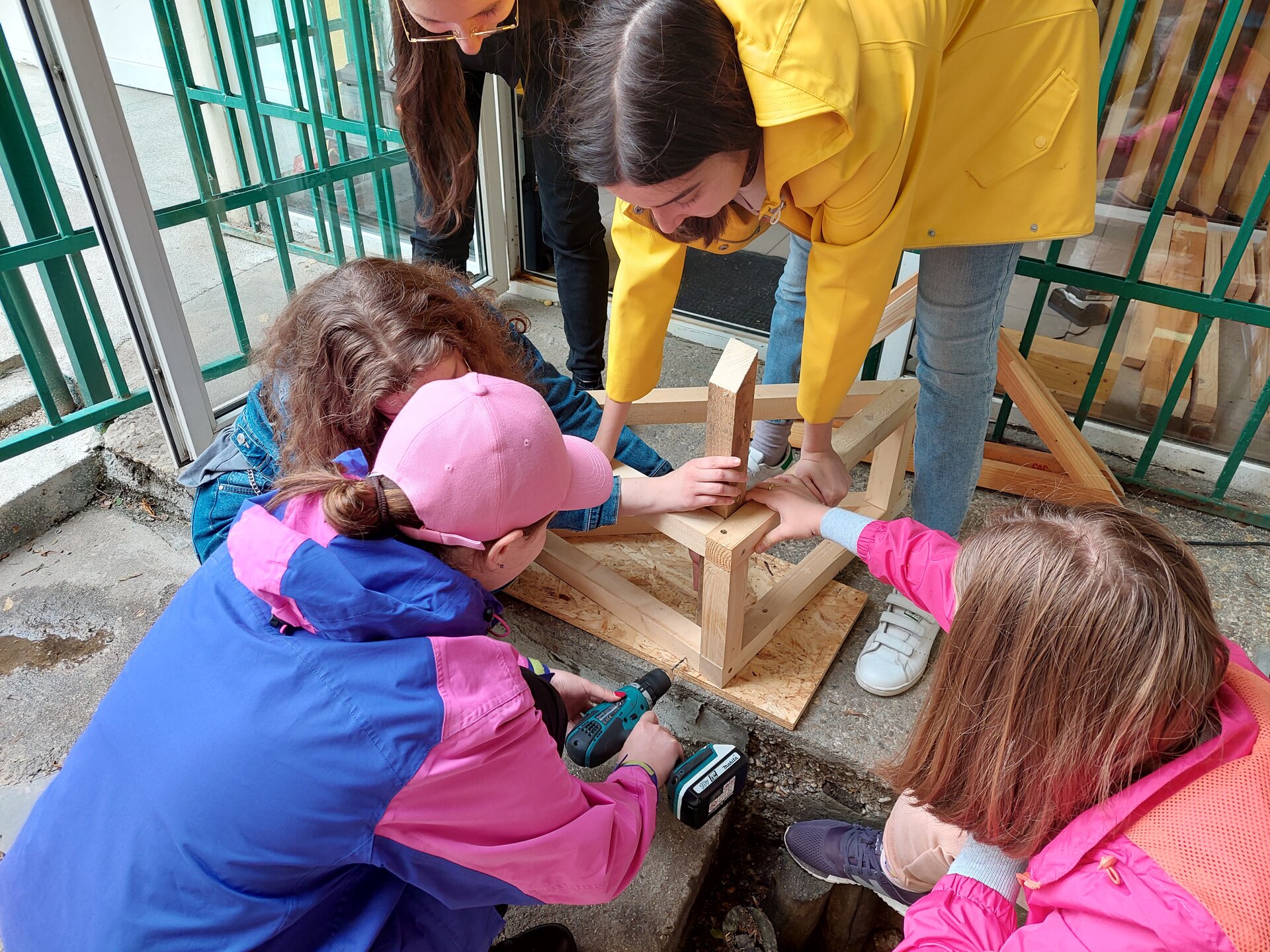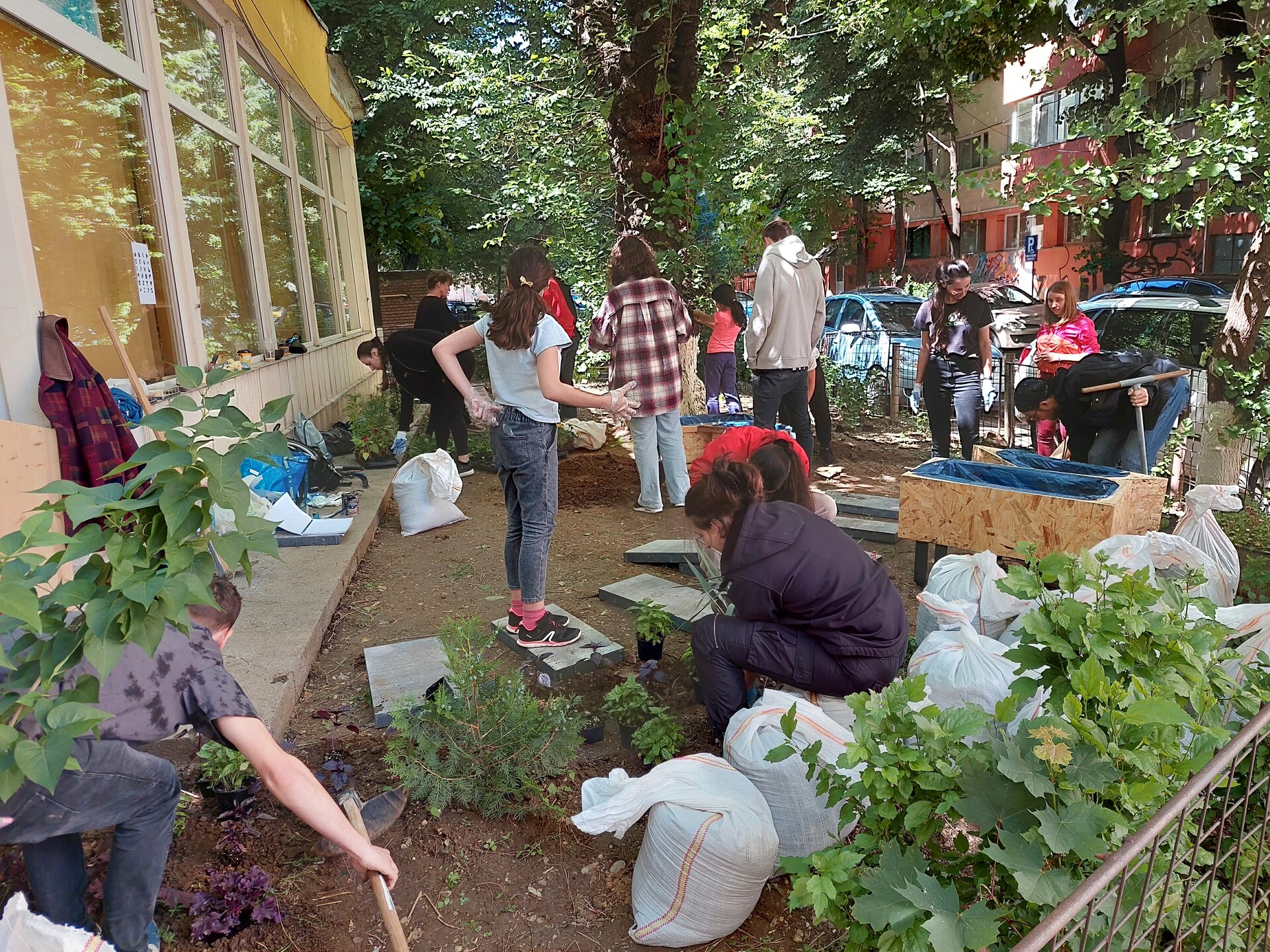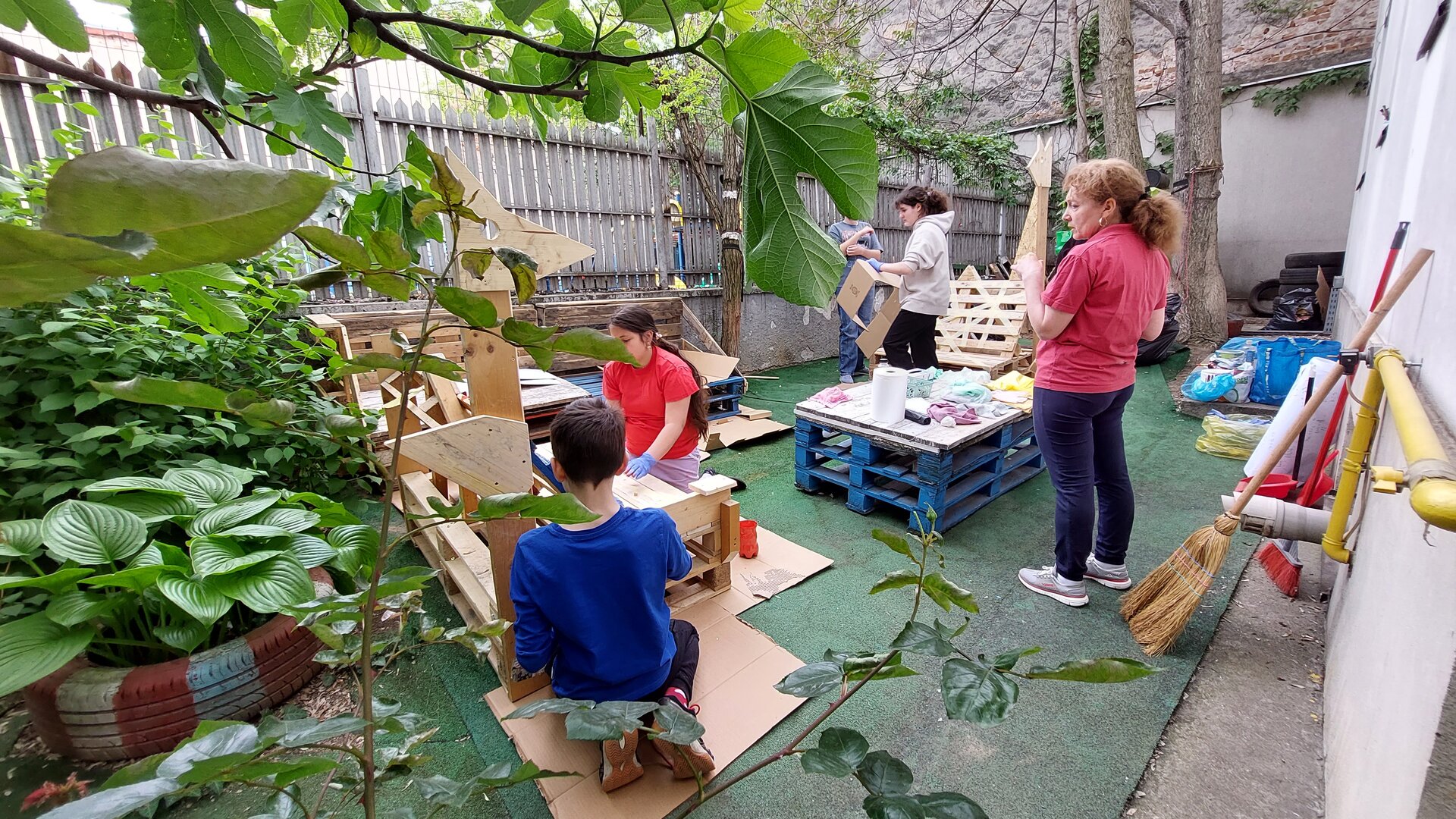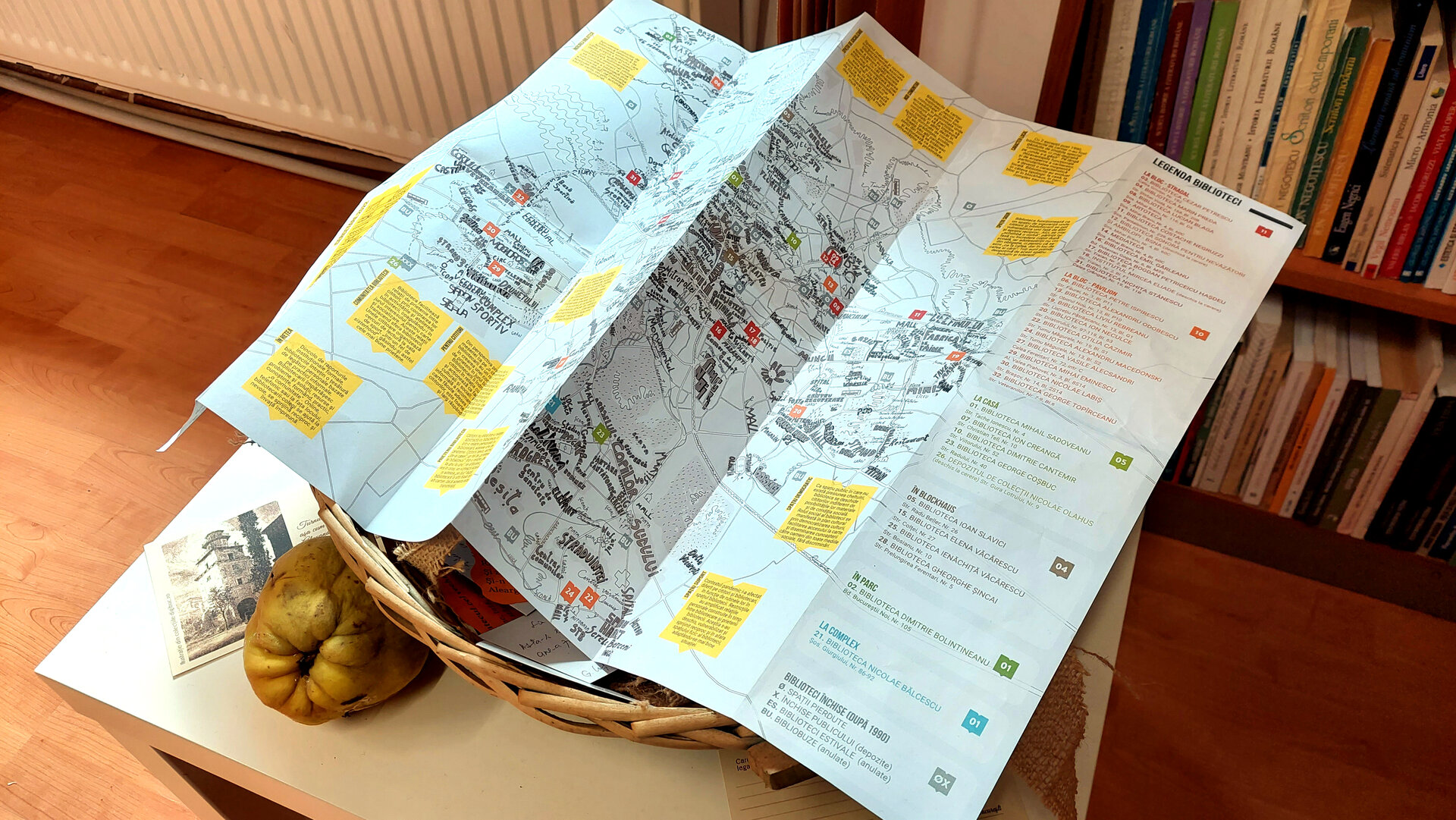
- Prize of the “Research through Architecture / Architecture and Experiments” section (ex aequo)
The Map of Neighbourhood Libraries from Bucharest (HBC)
Authors’ Comment
The public libraries in Bucharest didn’t benefit along their evolution from a construction program of dedicated spaces. The unbalanced location in the territory reduces their accessibility and many of the improper premises affect their operation. Despite chronic underfunding, libraries remain important places on the districts’ map. In the context of the fragmentation, privatization and disappearance of community spaces, some neighbourhood libraries function as true implicit community centres. The care of librarians and the solidarity of readers which have become "friends of the library" keep these spaces alive.
In this context, the qualitative research project Map of Neighbourhood Libraries (HBC) aimed to illustrate the transformative potential of public libraries through good practice examples from local branches. HBC aimed to highlight the impact of libraries on the quality of life, their contribution to maintaining the social equity and the coagulation of urban communities. The research aimed to support the cause of libraries in the public narrative and to make a case for the development and expansion of the public library network in the neighbourhoods.
The research had a pronounced qualitative component, based on a participatory methodology, with an emphasis on field research. The approach was interdisciplinary, using methods specific to anthropology, urban planning and history. Mapping workshops were organized in all 29 branches opened, involving users and librarians. Their contributions materialized by tracing important landmarks, from daily destinations to educational, cultural and civic spaces located near the library. Based on these sketches, a supporting map of the neighbourhoods “seen from the library’ door" was redrawn. In between the workshops, 24 semi-structured interviews were conducted with readers and librarians. The workshops and interviews organized in the branches were also occasions for conducting ethnography. In parallel with the field research, periodicals and photos from the BMB archive were consulted. Through the analysis of the documents, a historical evolution of the neighbourhood libraries was traced from the urban planning perspective and their role in the life of the communities.
In the end, the results of the research consisted in a printed version distributed in BMB branches and to local actors and a detailed report available online with public policy suggestions and recommendations. Moreover, the research results were disseminated both to a wider audience, through presentations, articles and broadcasts, as well as to specialized partners through seminars. But the support for public libraries has also materialized through a series of actions in the studied branches. Through collaborations with USAMV and UAUIM, neighbourhood libraries were included among the topics analysed by the students. Some of the proposals were followed further, such as the participatory design of the garden of the "Alexandru Odobescu" library as part of Live.UAUIM.
Supporting public libraries according to the needs of the residents doesn’t mean only informed residents, but also emotionally balanced, integrated in a community of interests and practices, resilient citizens and solidary in crisis situations. Associated not only with the distribution of culture and education, but also with dwelling, the library can function as a community laboratory.
Report: https://oar.archi/wp-content/uploads/2022/11/HARTA-BIBLIOTECILOR_RAPORT-SINTEZA.pdf
- The Map of Neighbourhood Libraries from Bucharest (HBC)
- Bucharest. Minor Structure vol.1 & 2
- IMUAU Summer School. Schönberg 2023
- MEeT Heritage
- Girafa Urbană ( Urban Giraffe) - Tunari-Eminescu
- Hypostyle
- Voice Your Place
- Cities that transform - Beirut after the blast
- Lapis Domum. In the footsteps of the architecture carved in stone
- The shape and measure of space
- Summer Bucium University, X-th edition, 2022
- Summer Bucium University 2023
- Inventory of the vernacular heritage of Mușetești, Gorj county
